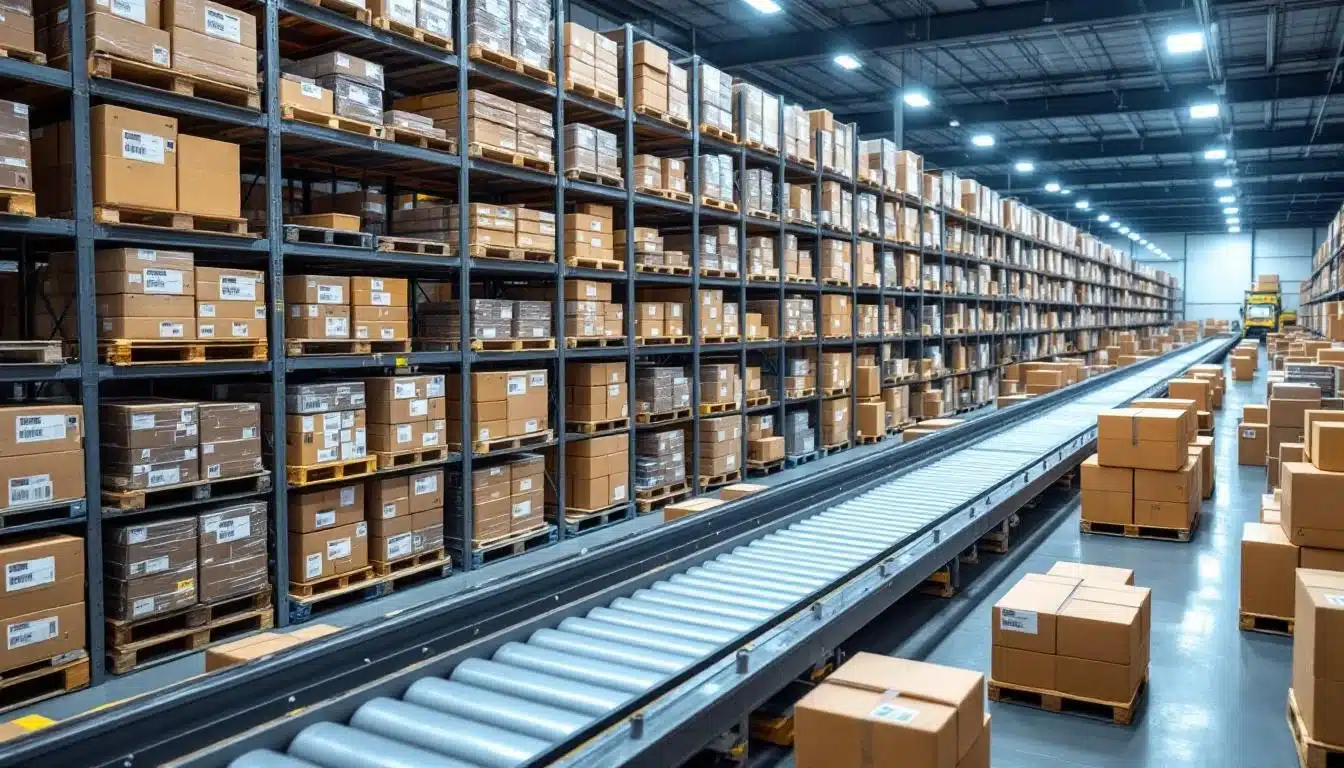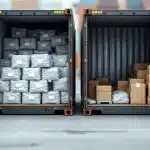Supply chain optimization is a game-changer for businesses looking to boost their bottom line. In today’s fast-paced market, companies need to streamline operations and maximize efficiency to stay competitive.
At Loyalty Logistics, we’ve seen firsthand how the right strategies can transform supply chains from cost centers into powerful drivers of growth and profitability.
This post will explore key tactics to help you optimize your supply chain and achieve peak performance.
How to Streamline Your Inventory Management
Effective inventory management forms the backbone of a well-oiled supply chain. Proper inventory control can dramatically reduce costs and boost efficiency. Here’s how you can streamline your inventory management for maximum impact.
Implement Just-in-Time Practices
Just-in-Time (JIT) inventory revolutionizes stock management. This approach minimizes excess stock by aligning orders closely with production schedules. Companies that implement JIT report inventory cost reductions of up to 30%. To start, identify your most predictable product lines and gradually shift them to a JIT model. Successful JIT implementation requires strong supplier relationships and reliable transportation.
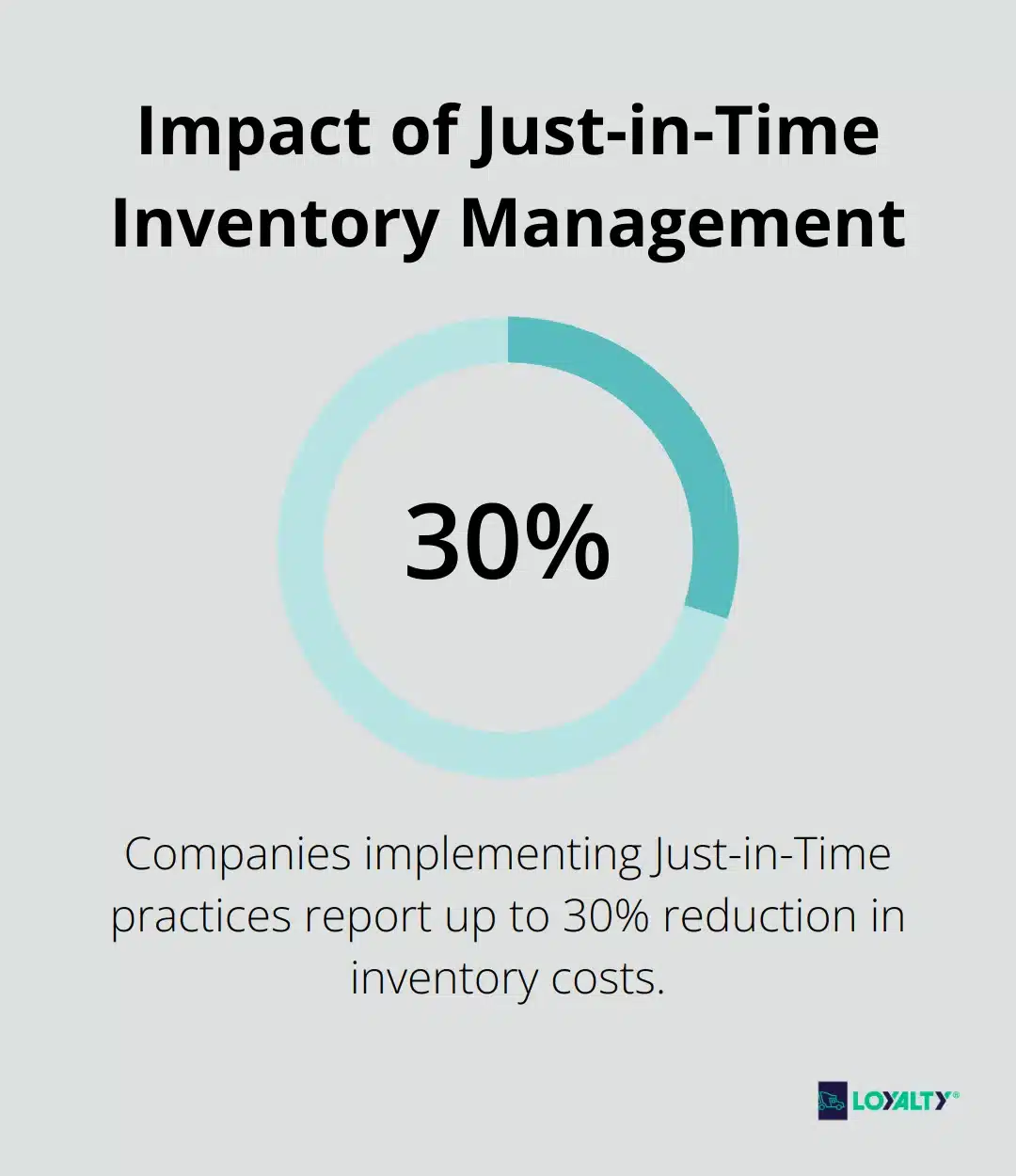
Use Data Analytics for Demand Forecasting
Data serves as your secret weapon in inventory management. Advanced analytics tools predict demand with remarkable accuracy, helping you avoid both stockouts and overstock situations. For instance, Procter & Gamble uses SAS analytics to forecast demand, resulting in a 35% reduction in excess inventory. Start by collecting and analyzing historical sales data, seasonal trends, and external factors (like economic indicators). Use this information to make data-driven decisions about stock levels and reorder points.
Optimize Warehouse Layout and Organization
A well-organized warehouse significantly speeds up operations and reduces errors. Studies show that optimizing warehouse layout can increase productivity by up to 25%. Analyze your product movement patterns to improve efficiency. Place fast-moving items near shipping areas and group related products together. Implement a clear labeling system and use technology (like RFID tags) for easy location tracking. Regular audits of your layout will ensure it evolves with your business needs.
Utilize Automated Inventory Systems
Automated inventory systems can transform your stock management. These systems provide real-time visibility into inventory levels, automate reordering processes, and reduce human error. Try to implement barcode scanning or RFID technology to track inventory movements accurately. This automation can lead to significant time savings and improved accuracy in inventory counts.
Conduct Regular Inventory Audits
Regular inventory audits help maintain accuracy and identify discrepancies early. Try to schedule cycle counts (partial inventory checks) regularly, rather than relying solely on annual full inventory counts. This approach allows you to address issues promptly and maintain a more accurate picture of your inventory throughout the year.
As you implement these strategies to streamline your inventory management, you’ll create a more responsive and efficient supply chain. This optimization sets the stage for the next critical aspect of supply chain efficiency: leveraging technology for enhanced visibility.
How Technology Boosts Supply Chain Visibility
Technology transforms supply chain operations, enhancing visibility and streamlining processes. Let’s explore how you can leverage technological tools to optimize your supply chain.
Real-Time Tracking Systems
Real-time tracking systems revolutionize supply chain management. These systems provide instant updates on inventory levels, shipment locations, and delivery statuses. A study by Zebra Technologies reveals that 72% of companies plan to implement real-time location systems by 2025. To start, integrate GPS-enabled devices in your fleet and RFID tags on your inventory. This approach allows you to monitor goods movement from warehouse to final destination, which reduces delays and improves customer satisfaction.
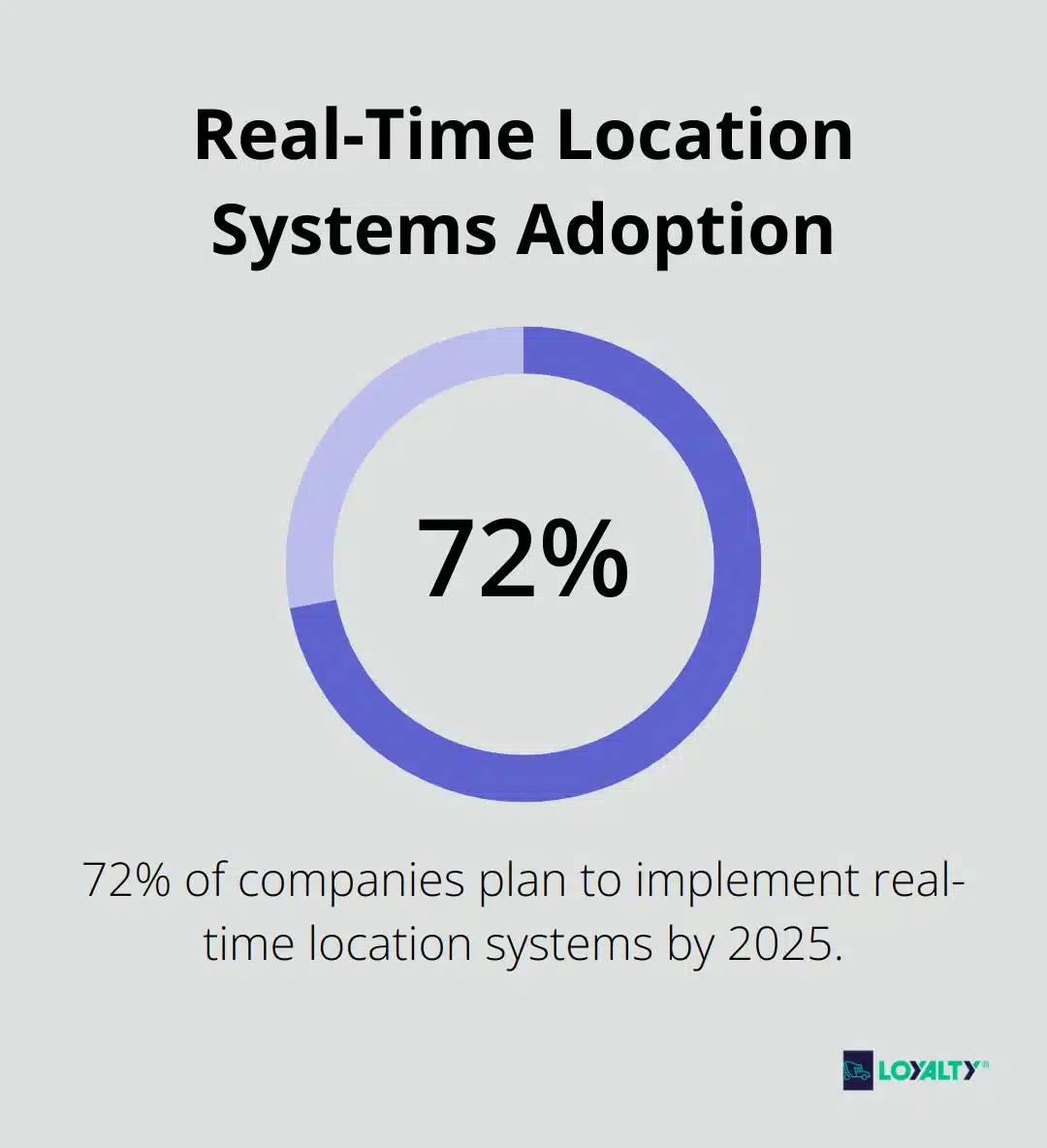
Blockchain for Enhanced Transparency
Blockchain technology offers unparalleled transparency and traceability in supply chains. Gartner predicts that by 2026, 20% of large enterprises will use blockchain for digital supply chain integration. Blockchain creates an immutable record of transactions, which enhances trust between partners and reduces fraud risks. Try to implement blockchain in a specific area of your supply chain, such as tracking high-value items or managing supplier contracts.
Cloud-Based Supply Chain Management
Cloud-based supply chain management software provides a centralized platform for all your supply chain operations. These systems offer real-time data access, improved collaboration, and scalability. IDC reports that 75% of all manufacturing supply chains will use cloud-based applications by 2023. When you choose a cloud-based solution, look for features like inventory management, order tracking, and analytics capabilities. Ensure the platform integrates well with your existing systems for seamless data flow.
IoT for Enhanced Monitoring
The Internet of Things (IoT) significantly improves supply chain visibility. IoT sensors monitor everything from temperature in refrigerated trucks to vibration levels in sensitive shipments. A study by DHL and Cisco estimates that IoT technologies could generate $1.9 trillion in supply chain and logistics value. Identify critical points in your supply chain where real-time data could prevent losses or improve efficiency, then implement IoT sensors at these points.
Data Analytics for Informed Decision-Making
Data analytics tools transform raw data into actionable insights. These tools analyze historical trends, predict future demand, and identify potential bottlenecks in your supply chain. Companies that leverage advanced analytics (like machine learning and AI) report a 15% increase in supply chain efficiency. Start with basic descriptive analytics to understand your current performance, then progress to predictive and prescriptive analytics for more sophisticated insights.
The implementation of these technologies creates a more transparent, efficient, and responsive supply chain. As you become more comfortable with these tools, expand their use across your entire supply chain network. The next step in optimizing your supply chain involves enhancing supplier relationships and collaboration, which we’ll explore in the following section.
How to Build Stronger Supplier Partnerships
Strong supplier relationships form the foundation of an efficient supply chain. We at Loyalty Logistics have observed significant improvements in supply chain performance through robust partnerships. Here’s how you can enhance your supplier relationships and collaboration:
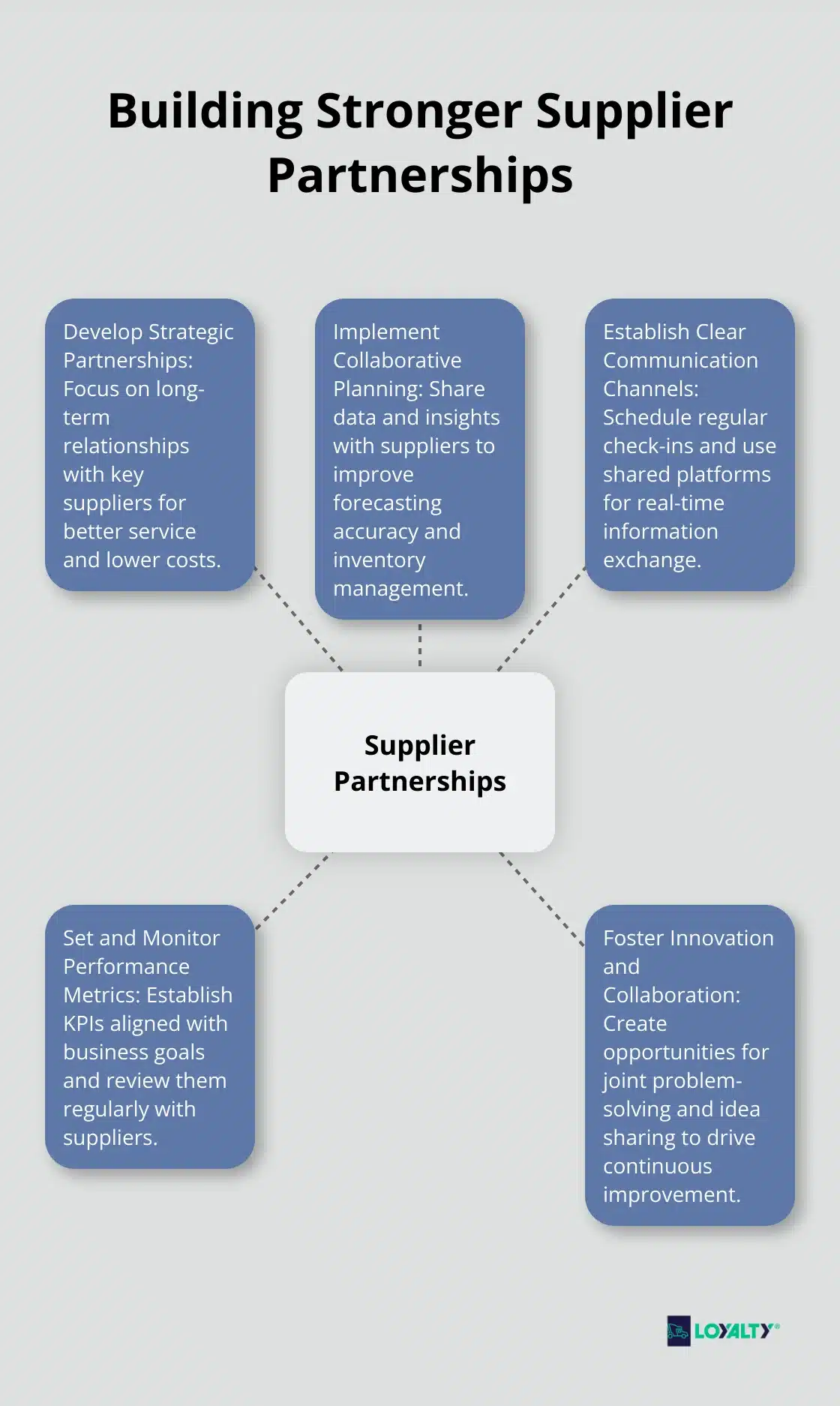
Develop Strategic Partnerships
Transform your supplier relationships from transactional to strategic. Identify key suppliers critical to your operations and focus on developing long-term partnerships. This approach yields substantial benefits. A McKinsey study found that companies with strong supplier relationships achieved cost savings of 2-3% annually.
Share your long-term goals and strategies with these suppliers. This transparency allows them to align their operations with your needs, potentially leading to better service and lower costs. Consider implementing supplier development programs to improve key partners’ capabilities, which in turn enhances your supply chain.
Implement Collaborative Planning
Collaborative Planning, Forecasting, and Replenishment (CPFR) is a powerful strategy for enhancing supplier relationships. This approach involves data and insight sharing with suppliers to improve forecasting accuracy and inventory management.
The Voluntary Interindustry Commerce Solutions Association reported that companies implementing CPFR saw a 30% reduction in inventory levels and a 20% improvement in forecast accuracy. To implement CPFR, share your sales forecasts and inventory data with key suppliers. Use this shared information to collaboratively plan production schedules and inventory levels.
Establish Clear Communication Channels
Effective communication is vital for strong supplier relationships. Schedule regular check-ins with your suppliers to discuss performance, challenges, and improvement opportunities. Use these meetings to address any issues promptly and collaboratively.
Try to implement a supplier portal or shared platform for real-time information exchange. This could include updates on orders, inventory levels, and shipping statuses. Such platforms can significantly reduce miscommunication and improve overall efficiency.
Set and Monitor Performance Metrics
Clear performance metrics are essential for effective supplier relationship management. Work with your suppliers to establish key performance indicators (KPIs) that align with your business goals. These might include on-time delivery rates, quality metrics, or cost-saving targets.
Review these metrics regularly with your suppliers and use them as a basis for continuous improvement discussions. APQC found that top-performing companies are 2.5 times more likely to use supplier scorecards to track and improve supplier performance.
Foster Innovation and Collaboration
Encourage innovation and collaboration with your suppliers. Create opportunities for joint problem-solving and idea sharing. This approach can lead to new product developments, process improvements, and cost reductions.
Set up innovation workshops or supplier forums where you can brainstorm solutions to common challenges. Recognize and reward suppliers who contribute innovative ideas or exceptional performance. This fosters a culture of continuous improvement and strengthens your partnerships.
Final Thoughts
Supply chain optimization requires dedication, innovation, and strategic thinking. Companies that streamline inventory management, leverage technology, and foster strong supplier relationships improve their efficiency significantly. These strategies reduce costs, boost customer satisfaction, and enhance overall competitiveness in the market.
Successful optimization in supply chain management demands a culture of continuous improvement. Regular assessment and refinement of processes ensure your supply chain remains agile and responsive to evolving market conditions and emerging technologies. This ongoing commitment aligns your supply chain with your business goals.
We at Loyalty Logistics understand the complexities of modern supply chains and the importance of optimization. Our expertise in providing versatile transportation solutions (with a 98% on-time rate) positions us as an ideal partner for businesses seeking to enhance their efficiency. Contact Loyalty Logistics today to discover how our tailored solutions can transform your logistics operations and propel your business forward.

